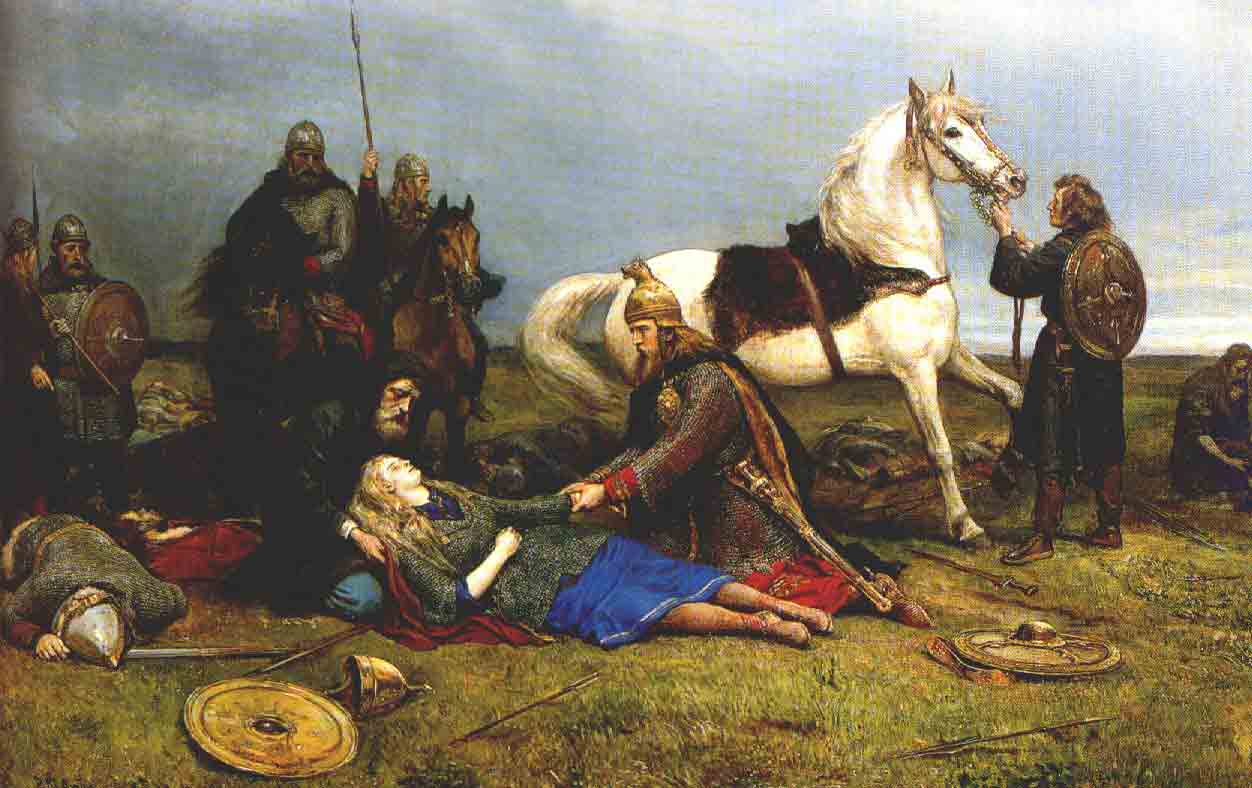
Burial findings in Stockholm (Hansen)
Recently, the New York Times released an article about the discovery of a Viking warrior in Stockholm. The reason this made headlines: the warrior is believed to be a woman. The article “A Female Viking Warrior? Tomb Study Yields Clues” by Christina Anderson delves into what was found and how this may challenge our view of the Vikings. Anderson reports that some of the researchers believe “‘women, indeed, were able to be full members of male-dominated spheres’” (Anderson). In the tomb, scholars found a warrior’s grave furnished with knives, axes, swords, spears, shields, and even two horses. On her lap, there was a hnefatafl or King’s Table signifying her high status and her great ability for making strategic decisions. To many scholars, this find means many of the women warriors deemed a mythical may have actually existed.
This find is part of a larger wave of what many are calling feminist archaeology. The objective of feminist archaeologists is “exposing and correcting the male bias” (Renfrew). While this action is needed, the scholars in Stockholm investigating the tomb may need to take a step back. Anderson reports other scholars’ outrage over the premature report. Notably, Judith Jesch, a Viking studies professor at the University of Nottingham in England, shares her outrage. Jesch believes the grandeur of a female warrior may be clouding their judgement. Jesch also points out many things that were not considered, Anderson reports: “bones of various people might have gotten mixed together given that 130 years have passed since the original excavation; the inference that the board-game pieces suggest a high-status female warrior is too speculative; and alternative explanations for why a female body might have ended up in a warrior’s tomb.” Clearly further research must be done and other options must be regarded.
However, there are plenty of indicators that females in Viking society did have more respect and power than in typical European societies at this time. Jesch writes in her book Women in the Viking Age, “women could have great wealth and standing in the community… women could be merchants or craftspeople, working alone or as partners of their husbands” (205). Other writings concur with Jesch. Social Scandinavia in the Viking Age by Mary Wilhelm Williams also looks at women in Viking times. Williams explains “they enjoyed more independence than any other women of contemporary Europe” (109). Further, Williams says women were given the same schooling and were adequate partners for their husbands. Women in the society were well “honored and respected” (Williams 109-110). This time period for women was not perfect, but they did have some luxuries.

Painting of the death of a female Viking warrior (Laskow)
Yet there is no indication of female warriors. Some stories had powerful goddesses and impressive female warriors, but these have been dismissed by many as only myths. Some art produced at this time included powerful women, but again these are accepted as depictions of myths. Thus the findings of a woman warrior may be too good to be true.
That said, the work done by the scholars in Stockholm investigating the burial of a warrior they believe to be a women is important. Archaeologists need to question the past and need to correct the possible biases of past researchers. On the other hand, archaeologists must not become overly sensitive to past biases themselves. The scholars may not have went to the Viking burial expecting to find a women buried like a man, but when that was what they found, they stopped questioning. They might be correct in their findings that there were female viking warriors; however, all evidence must be taken into account. Further research is needed.
Sources
Anderson, Christina. “A Female Viking Warrior? Tomb Study Yields Clues.” The New York Times, The New York Times, 14 Sept. 2017, www.nytimes.com/2017/09/14/world/europe/sweden-viking-women-warriors-dna.html?_r=0.
Jesch, Judith. Women in the Viking Age. The Boydell Press, Woodbridge, 1991.
Renfrew, Colin, and Paul Bahn. Archaeology Essentials: Theories, Methods, Practice. 3rd ed., Thames & Hudson, 2015.
Williams, Mary Wilhelmine. “Position of Women .” Social Scandinavia in the Viking Age, The Macmillan Company, 1971, pp. 109–122.
Further Readings
Jesch, Judith. “Norse and Viking Ramblings.” Let’s Debate Female Viking Warriors Yet Again, 1 Jan. 1970, norseandviking.blogspot.co.uk/2017/09/lets-debate-female-viking-warriors-yet.html?m=1.
Pruitt, Sarah. “What Was Life Like for Women in the Viking Age?” History.com, A&E Television Networks, 18 Nov. 2016, www.history.com/news/what-was-life-like-for-women-in-the-viking-age.
Illustrations
Hansen, Evald. “A 19th-Century Illustration of the Contents of the Tomb, Which Was Quickly Identified after Its Discovery as That of a High-Ranking Warrior.” The New York Times, The Swedish History Museum, 14 Sept. 2017, www.nytimes.com/2017/09/14/world/europe/sweden-viking-women-warriors-dna.html?_r=0.
Laskow, Sarah. “Hervors Død.” Atlas Obscura , www.atlasobscura.com/articles/viking-warrior-woman-burial-birka.

Now that that there isthmus case for a high ranking female viking warrior is there ay work in going back to other viking burials and examining them to see if this is more prevalent? what is the significance of being buried with two horses? is this common in viking burials or unique to this case?